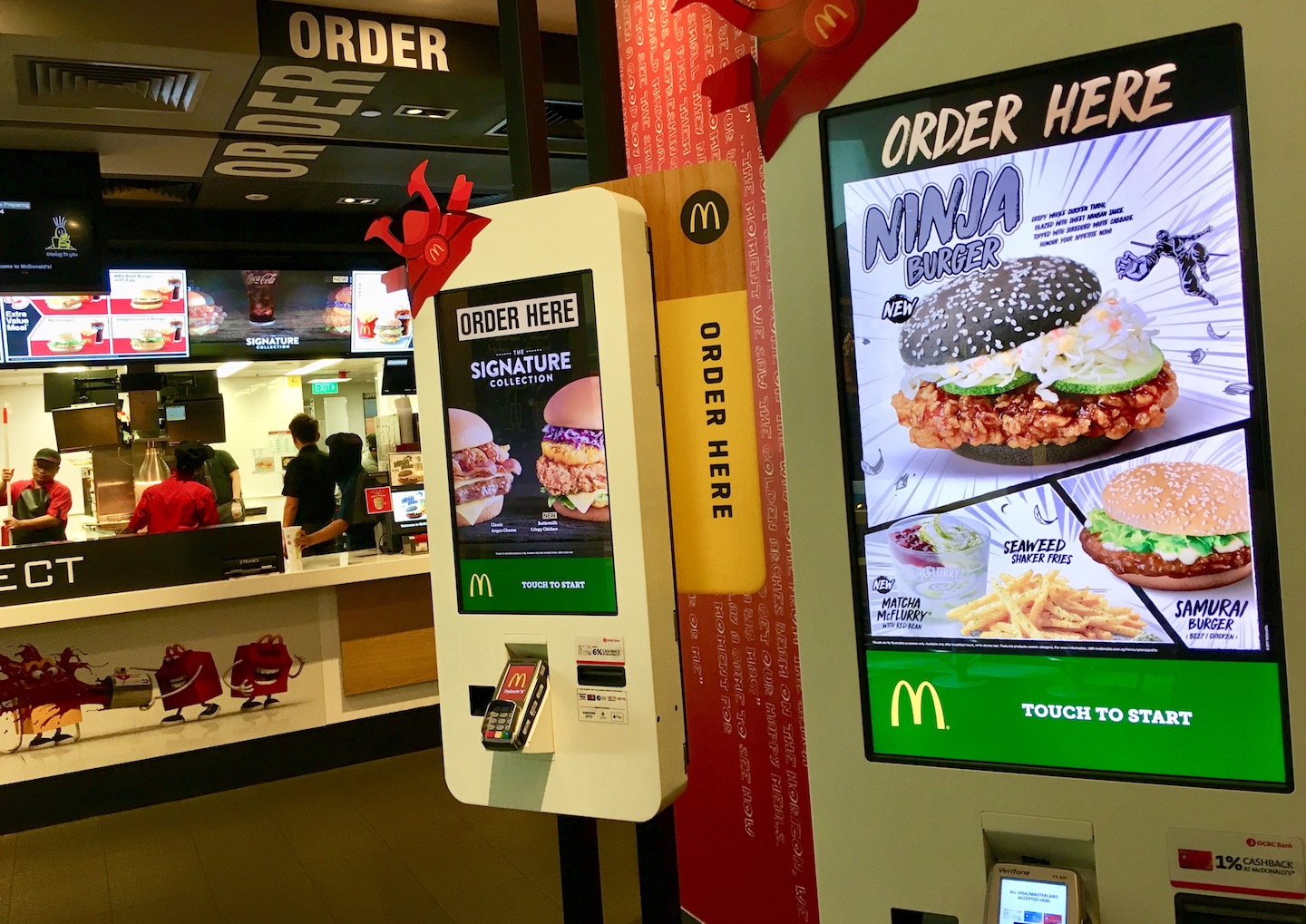Why Global Restaurant Chains Embrace (Some) Local Flavors

Photo Credit: A self-order kiosk at a McDonald's in Singapore. The franchise offers a Ninja Burger fried chicken sandwich, among other destination-specific items. Skift Table
Skift Take
Menu development is a painstaking process. When U.S. chains develop menu items for overseas locations, they must be even more conscious of striking a balance between brand consistency and familiar local flavors.
Get a traditional breakfast of baked salmon at Denny's in Japan. Order pizza with cheeseburgers embedded in the crust at Pizza Hut in the United Arab Emirates. Or try a vegan burger at McDonald's in Sweden.
For big restaurant chains, the key to developing menus for international markets is striking a balance between core, signature menu items and culturally relevant — but still on brand — offerings that resonate with local consumers.
David Kamen, manager of consulting projects at CIA Consulting, a division of the Culinary Institute of America, has been involved with the painstaking process of menu development for national and regional fast-food chains. It all starts with the marketing department and trying to figure out what consumers want.
"The bigger the company gets, the more intense the process becomes, just because the company's got, No. 1, more to lose and No. 2, is a little less nimble," Kamen said.
The marketing department begins by trying to pinpoint what consumers are craving. Their ideas may be informed by focus groups and data analysis. Next come ideation sessions to brainstorm potential new menu items. After that, steps for actually making the item are developed.
Eventually, a test menu item is given to consumer focus groups to try and offer feedback. If the results are positive, the menu item makes its way to a limited test market of restaurants, and, if successful, a national and international rollout.
"Part of the process is not just creating a new product and making sure the public likes it, but there's a whole host of things that go on behind the scenes," Kamen said.
Creating new menu items both domestically and internationally is an important business driver. Menu news helps attract consumer attention, according to The NPD Group.
"New items will drive traffic because there is a large group of consumers who are curious and want to try something new," Bonnie Riggs, NPD restaurant industry analyst, said in a press release. "They'll try it once and if it's really good, they'll be back for more."
According to Kamen, restaurant chains offer local operators varying amounts of control over their menus. Two of the biggest challenges are maintaining brand consistency while simultaneously trying to please local consumers' taste buds, and sourcing ingredients.
Balancing Act
Denny's breakfast menu in Japan offers one example of this balancing act. The Spartanburg, S.C.-based family-dining chain is known for its classic American breakfasts of pancakes, waffles, French toast, and eggs and bacon. Denny's restaurants in Japan also serve some of these items, as well as traditional Japanese breakfasts such as baked salmon with miso soup and rice.
"They [local dishes] almost have to be on the breakfast menu in other parts of the world," Kamen said.
Supply chain can also be an issue internationally.
"The challenge is, if you're in Tanzania, can you get the same McDonald's patty as you can get in Wisconsin? The global supply chain is such that that's not always the case," he said.
One factor that influences how chains deal with that challenge is size. Big chains in the U.S. are vertically integrated and control much of their supply chain, whether that means owning production facilities or contracting with farms to grow produce to their specifications. Much is the same overseas.
"A larger company may decide to own as much of the supply chain as possible," Kamen said, such as farms, dairies and production plants.
The size of the foreign country, particularly if it is relatively small, can also impact supply chain decisions.
"While we [in the U.S.] have such a diverse climate and growing region and population body, other countries don't have that," Kamen said.
If the country can't produce ingredients that match the home country's closely enough, or in a large enough quantity, the chain may decide to import those goods, but the costs of doing so must be considered.
"The more things to import, the more those are going to cost," Kamen said.

The travel industry's top event returns this fall.
September 16-18, 2025 - NEW YORK CITY
